Crypto Academy Week 16 - Homework Post for [@pelon53]
Introduction
Hello Steemians,
Welcome to another week in the Steemit crypto academy. I attended the lecture by the crypto professor @pelon53 as the professor based his teachings on Hashgraph Technology.. This blog is my homework task after the completion of the lesson. I will go straight to work on the assignment given by the professor.
Now let's get started. First and foremost, what is Hashgraph Technology? We can see Hashgraph technology as a more advance ledger technology (blockchain) which is found in the crypto ecosystem with the main aim of doing better in terms of performance than the initial or early blockchain that is been used by most of the cryptocurrencies at that time.
As we all know, different crypto networks employ it's own or we can say different consensus algorithms such as PoS which stands for Proof of Stake, PoW which stands for the Proof of Work etc. For the sake of this studies, we have seen that Hashgraph Technology, the type of algorithm employed here is known as the Gossip Protocol.
It is important to mention here that the primary reason for Hashgraph Technology is to improve transaction security, efficiency, scalability and also to enable larger amount of transactions per seconds.
Question 1.
Explain in detail the Gossip protocol, used in Hashgraph.
As earlier stated that different crypto networks uses different consensus algorithm such as PoS, PoW etc. The Gossip Protocol that is been used by the Hashgraph technology is a protocol that is responsible for sharing data within the whole system. The major aim or reason is for it to reach a consensus with a transaction in the network. The Gossip packet is used to send different messages in details to different nodes at random in the system. It is important to mention here that there is a continuous movement between the nodes present in the network. Messages from one node to the other moves continuously hence gossiping between the nodes is a continuous process.
For instance if you send a message from node A to another node say B, all the information contain in the node and the process taken must be put under consideration and documented properly. So when transaction is taken place it will be easy because everything has been taken under consideration.
Note
- Since all nodes are present in the transactions, validation is made easier.
- Transactions in the Hasgrapgh technology is faster and also it is very secured as it can process thousands of transactions at a time.
- Information about transactions are also sent in details throughout the different nodes.
Question 2.
Explain Tolerance to Byzantine Faults in Hashgraph
To answer this question, we need to understand what Byzantine Faults is all about. Byzantine Faults can be define as a process in which a node in a network fails without the knowledge of other nodes in the network. Tolerance in Byzantine Faults simply means that transactions can only be validated if and only if the nodes in the network reaches consensus.
For instance, if we have say 5 nodes in a network, and out of this 5, about 3 of the nodes are valid, then we can by a way of concluding that the network will reach a consensus.
Question 3.
Make a comparison between Hashgraph Vs Blockchain, for a voting process in your country. Which technology would you choose? Why?
The table below shows the comparison between Hashgraph Vs Blockchain
| S/No. | Basic | Hashgraph | Blockchain |
|---|---|---|---|
| 01. | Speed | Can process thousands of transactions in a second. | Here transaction processing is dependant on the algorithm in use be it PoW or PoS. |
| 02. | Scalability | More scalable in nature since there are no delay in transactions | Not scalable enough since it depends on the work of the miners |
| 03. | Safety | More safer since it uses Gossip protocol to communicate one after the other to different nodes. | Here the entire message is sent at once hence there may be a problem that will alter the transactions. |
| 04. | Efficiency | From all the listed advantages above Hashgraph has proven to be more effective | The efficiency of blockchain is not guaranteed |
Hashgraph technology adoption for Voting in my Country and Why
For a voting process in your country Nigeria, I will love to adopt the Hashgraph technology and the reason for my choosing the Hashgraph instead of the blockchain is not far-fetched. The Hashgraph has a virtual voting component which is done in the manner that the nodes present in the network knows which nodes in the network has voted and every details of the vote in question reaches a consensus in a transaction. Once the Hashgraph virtual voting is adopted in my country, it will help you analyse a free and fair voting since we will have all the nodes of the system sending all the data of vote to another node in the process of validation.
If this method is adopted, we need not wait for the compilations of votes after the voting exercise is done as the nodes will reach a consensus and then bring in a valid result.
Question 4.
Explore Hedera Hashgraph. Show screenshots.
I will be exploring hedera.com/. From my mobile device so follow me as we tour on this journey together.
- I start the exploration journey by visiting hedera.com/ from my mobile browser.
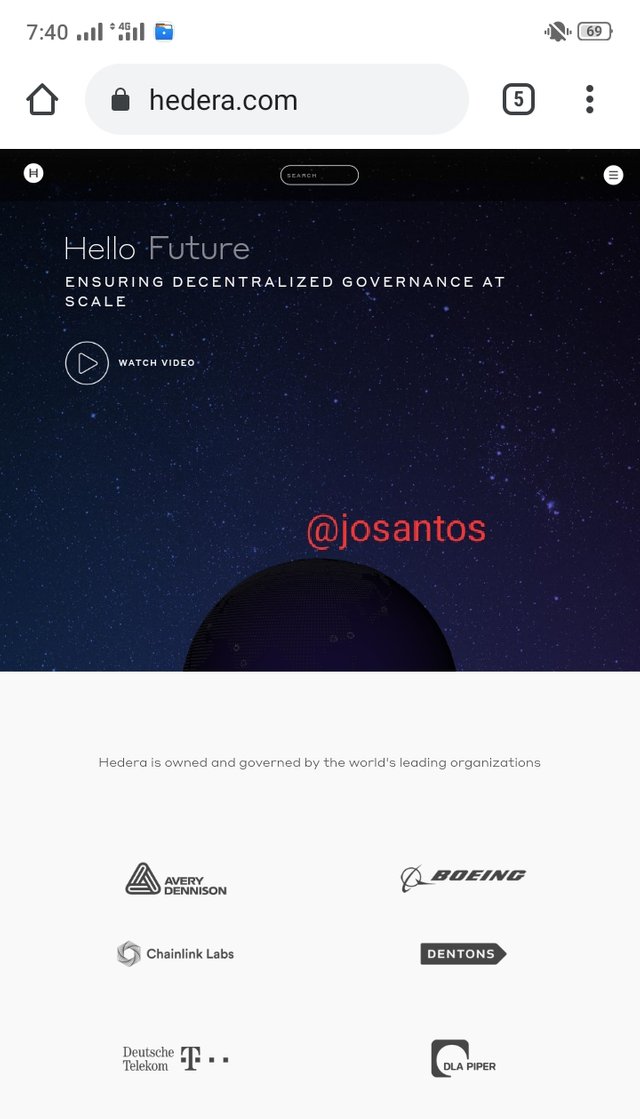
Hedera homepage
- Selecting the menu button which is the three parallel lines by the top-right of the page shows the options available (Network, Dev, Use Cases, HBAR, Governance and About).
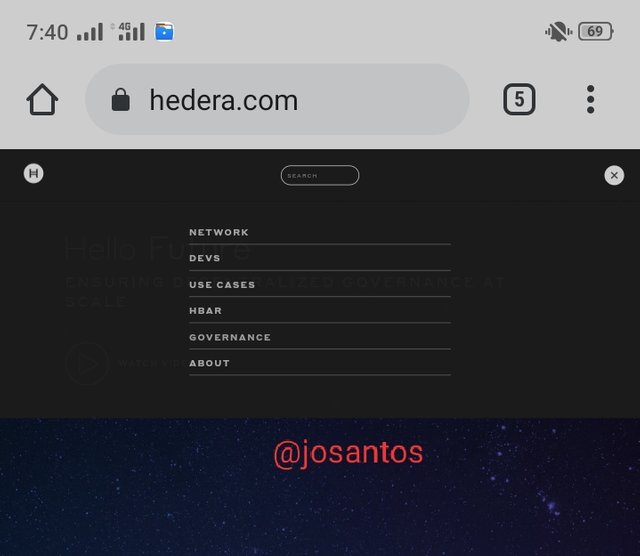
NETWORK
Once you click on network, the network has the options for Token Service that allows users to create own fungible and non-fungible tokens in the native Hedera network without deploying smart contract.
The next service is Consensus Service for developers that offers Hedera Consensus Service API for verifiable timestamping and ordering of any event for application of choice.
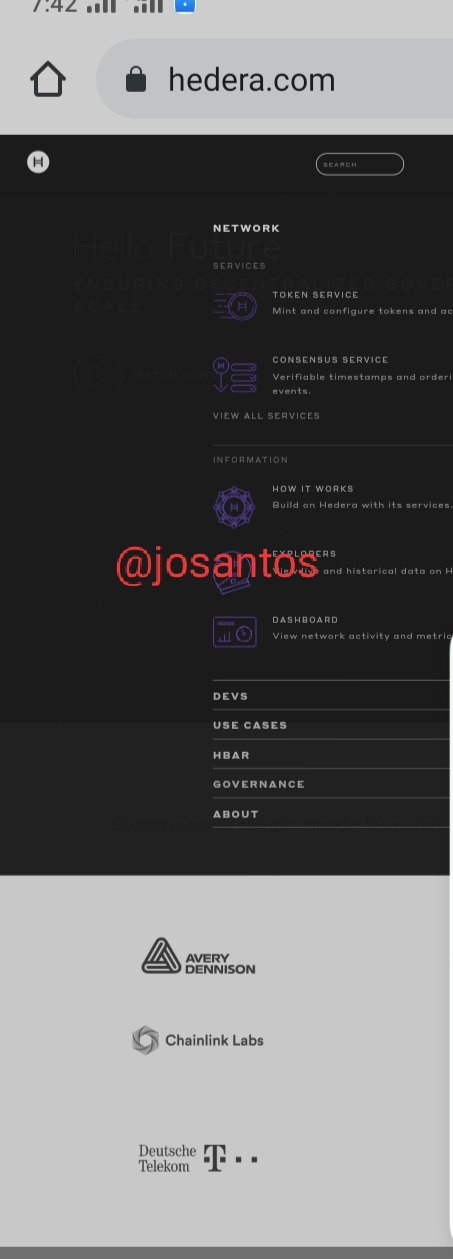
Hedera network
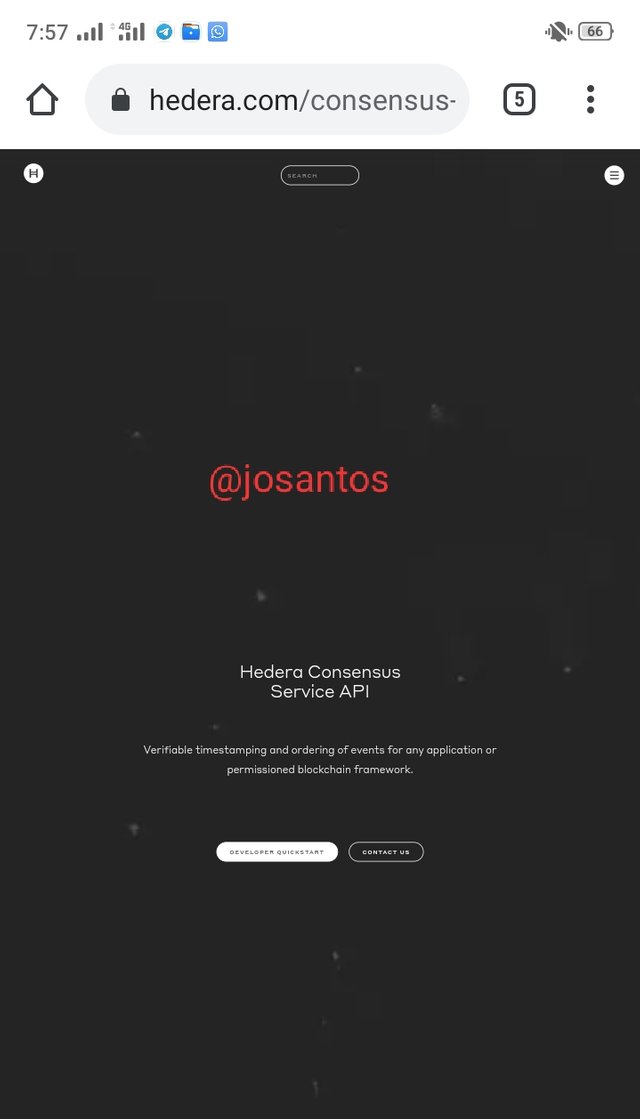

DEVS
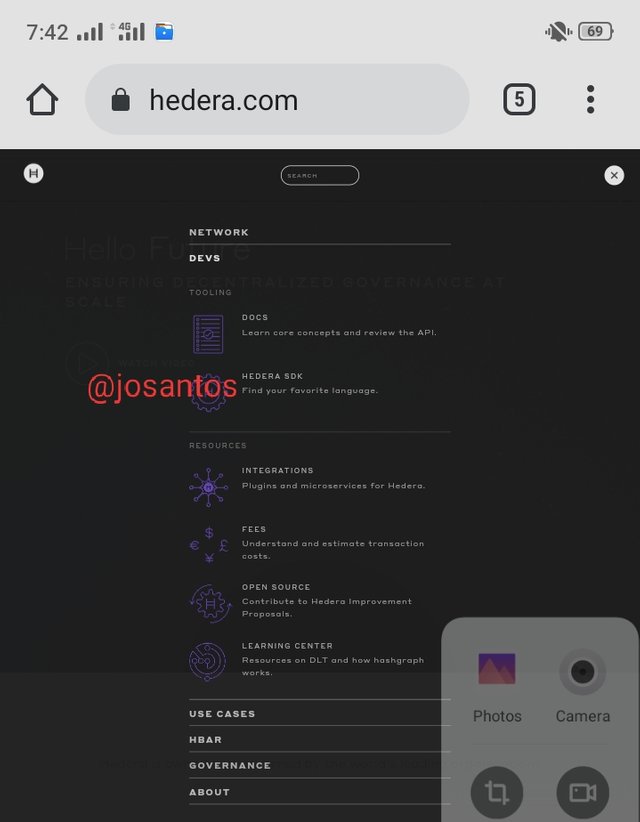
Devs
Under the DEVS, we have several options under it like; Tooling which has DOC- This contains all you need to know about Hedera Hashgraph, HEDERA SDK- which offers the Hedera API in different languages. Resources which has INTEGRATION- This allows users to integrate their existing application or permissioned blockchain framework into the Hedera network, FEES- that shows the fee schedules as decided the governing council, this could be useful for developers that wants to know the cost of integration in the Hedera network. Also under resources, we have the OPEN SOURCE option which tells a few things about Hedera Hashgraph on github and LEARNING CENTER- that take users on a ride about Hedera Hashgraph.
USE CASES
This section has some options which a few of them are; Payment, Tokenized assets, Fraud mitigation, Identity, Data Compliance, Permissioned blockchain etc.
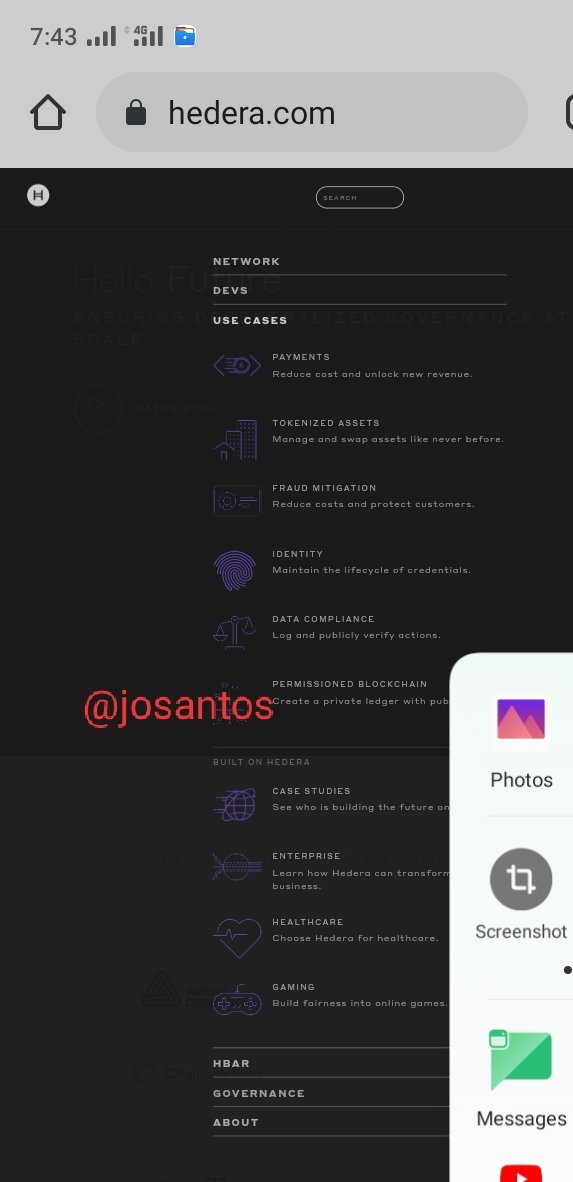
Use Cases
HBAR
In this part we see the Hedera Hashgraph native token (HBAR) section which has the options:-
- OVERVIEW- that give users details about the crypto currency.
- ACCOUNT CREATION- and this section allow users to create new Hedera mainnet account
- WALLETS & EXCHANGES- this section tells users the available wallets and exchanges that supports the HBAR cryptocurrency.
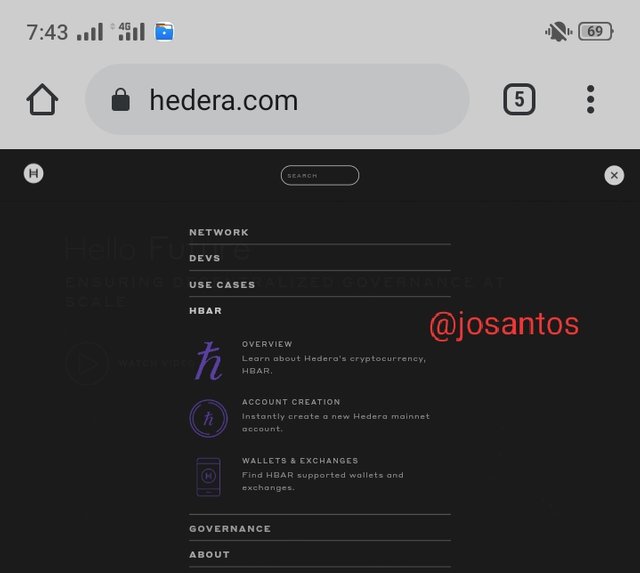
Hbar
GOVERNING COUNCIL
In this section, information about the governing council of Hedera Hashgraph, as seen from the website, it consists of 39 term-limited that includes different organizations and other enterprises to make up 11 sectors with other non-profit organizations worldwide. The job of Hedera Hashgraph governing council is to continually make decisions to improve the stability of the Hedera Hashgraph and also make changes with time to better the network.

Hedera Governing council
ABOUT
This section on Hedera Hashgraph shows sub-sections like; Team, Journey, Roadmap, User Group, Careers, Media, Press, News, Blog and Papers. Each of the mentioned links above gives a user what they are looking for as regards the link title.
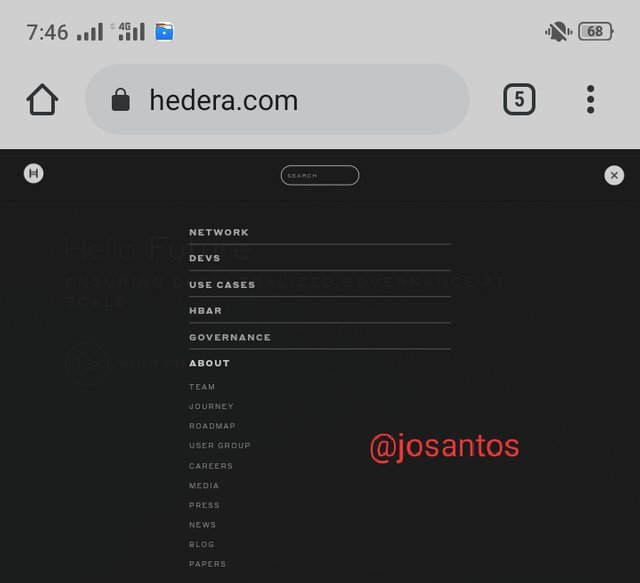
About
Meet Hedera Team Below



Conclusion
To say but the list, Hashgraph is really an amazing technology and it aims at tackling all the lapses found in the already blockchain technology. I have really learnt a whole lot at the cause of this lecture. Thanks to @pelon53 for this wonderful lecture.
Cc.
@steemitblog
@pelon53
Gracias por participar en Steemit Crypto Academy:
Faltó explicar el Protocolo Gossip, cómo se disemina. Igualmente las Tolerancia a fallas Bizantinas no fue explicado, muy mal explicado.
Espero seguir leyendo tus publicaciones.
Calificación: 5.8
Thanks prof.